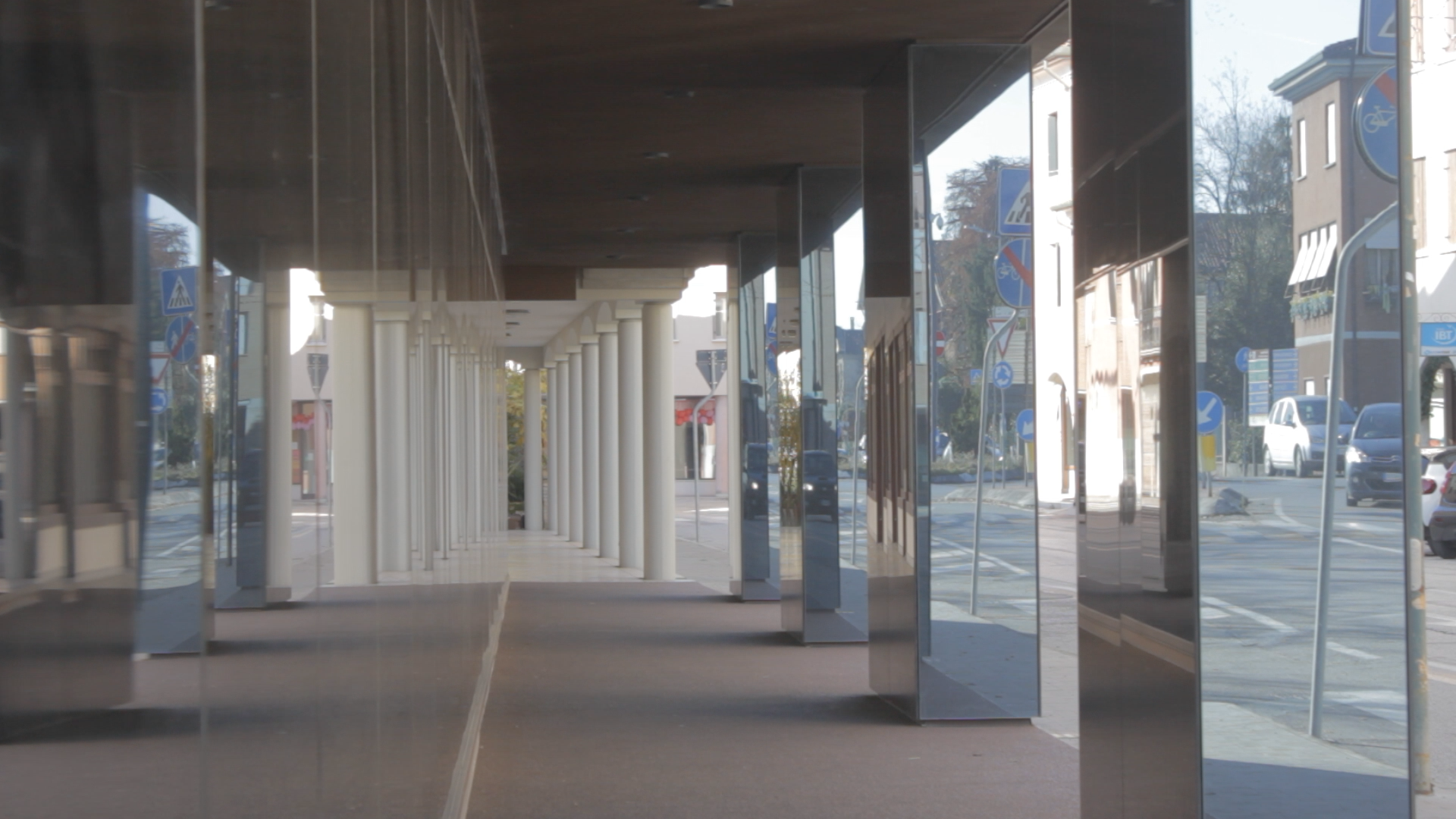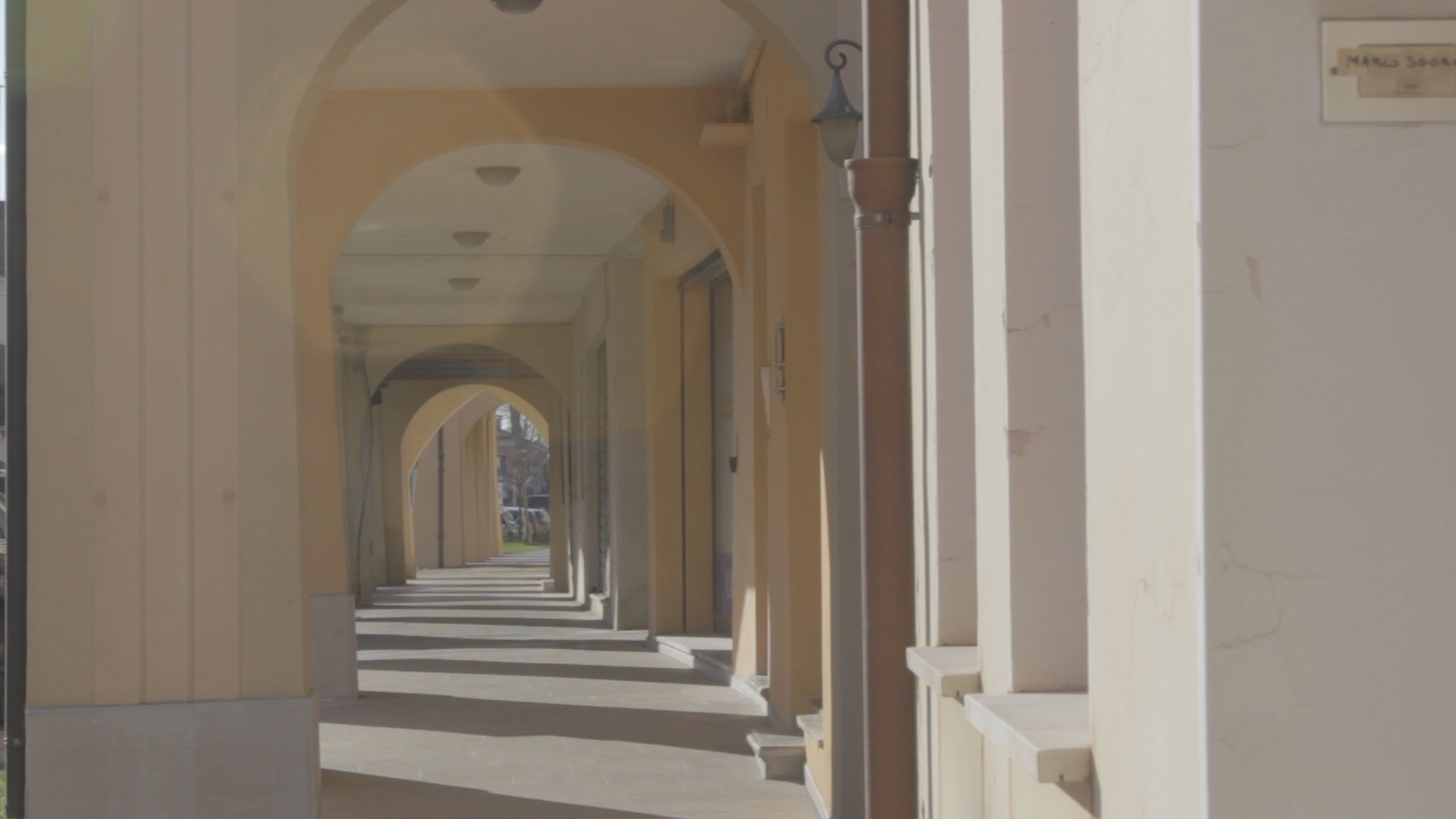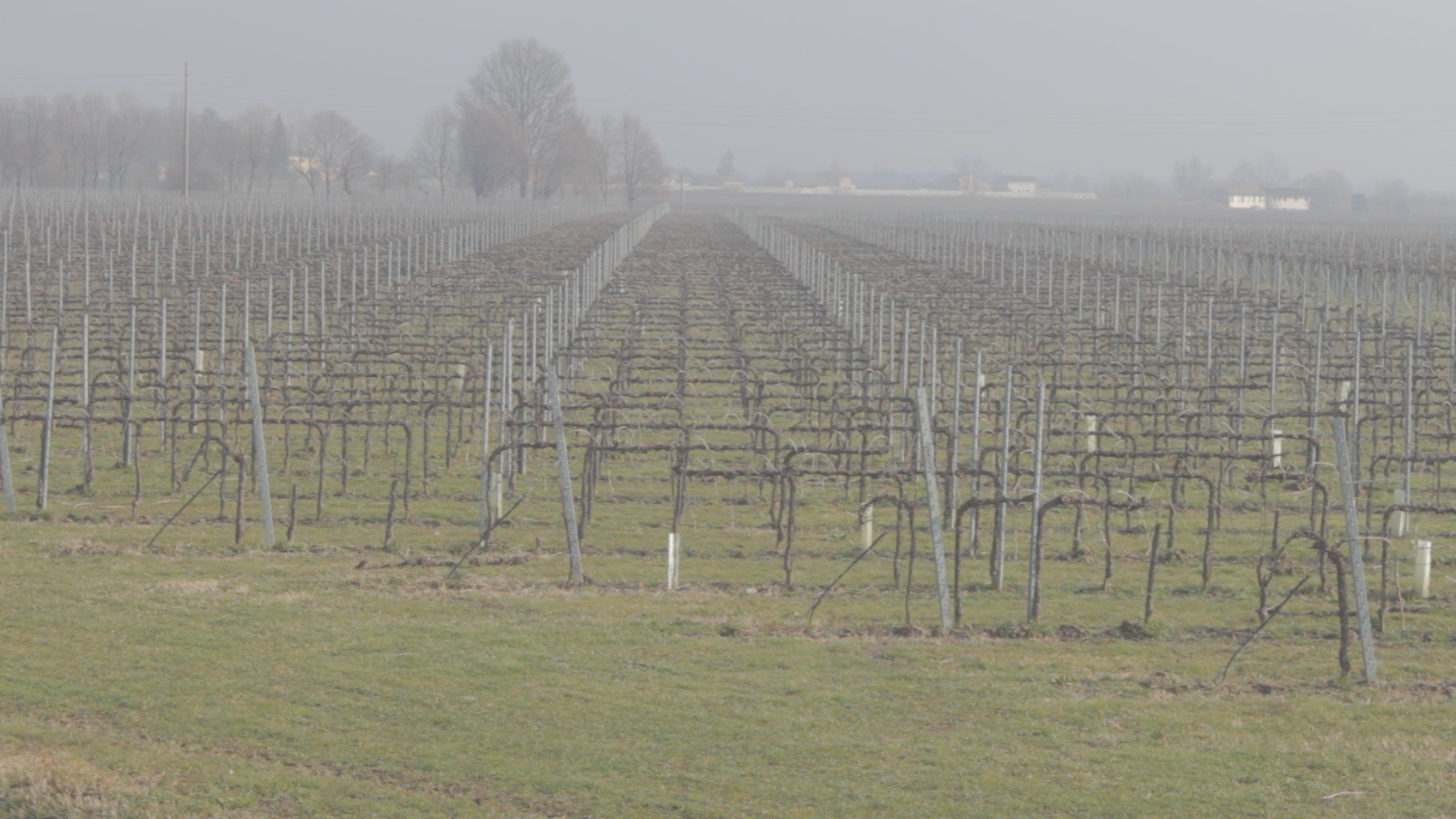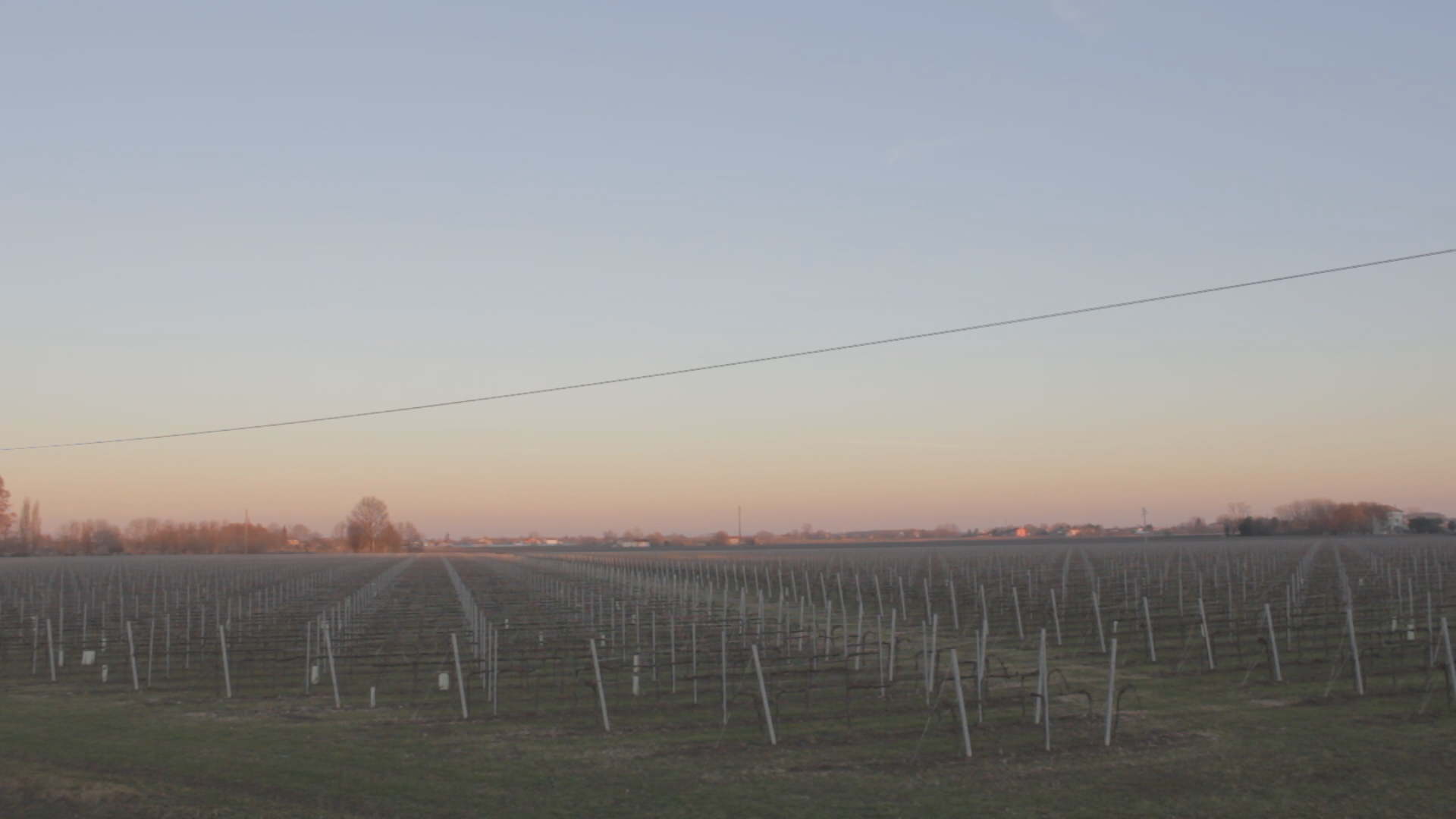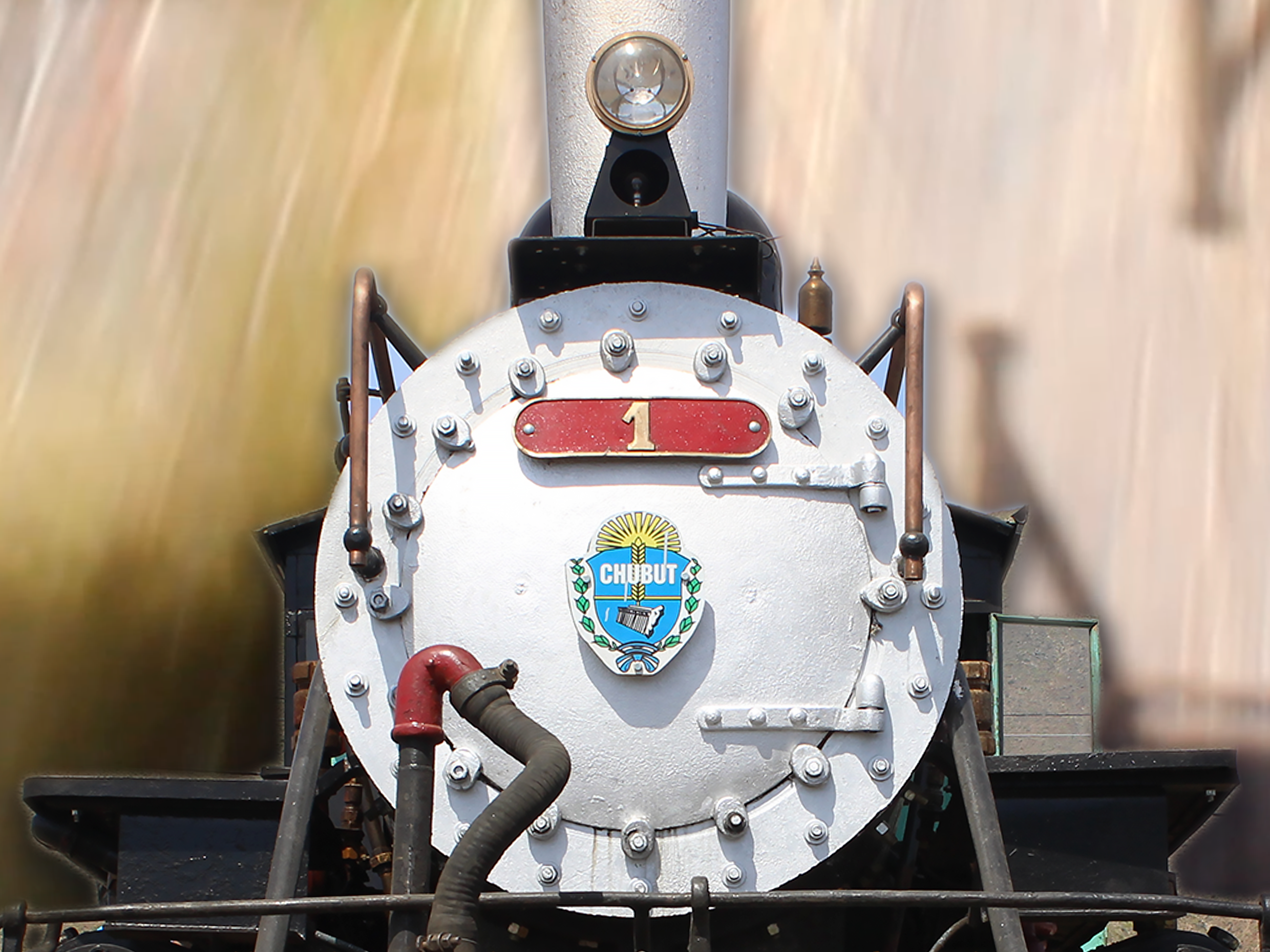[ Opitergium ] città archeologica
Documentary feature film
Synopsis: A mission for the viewer: to discover the place from which the shadow of the Duomo’s cusp is projected, marking the month on the sundial at noon during winter, in Oderzo, an archaeological city in the Po Valley, in northeastern Italy. This journey entails learning about the history, culture, and ideology of its inhabitants by spending the winter there. Among the Roman ruins, Venetian architecture, the picturesque setting, agricultural landscapes with canals, vineyards, and mountains, the scars of war, the consumerist lifestyle, sexist thinking, and the excessive use of cars, the origins of this city suspended in time are unveiled. After days of fog, rain, and clouds, the atmosphere clears, revealing the sky: airplane trails appear, pointing in a direction. With the full sun, one reaches the bell tower, where the bells ring noon along with the solar plenum, revealing the underground ruins hidden beneath the construction of apartment buildings and parking lots.
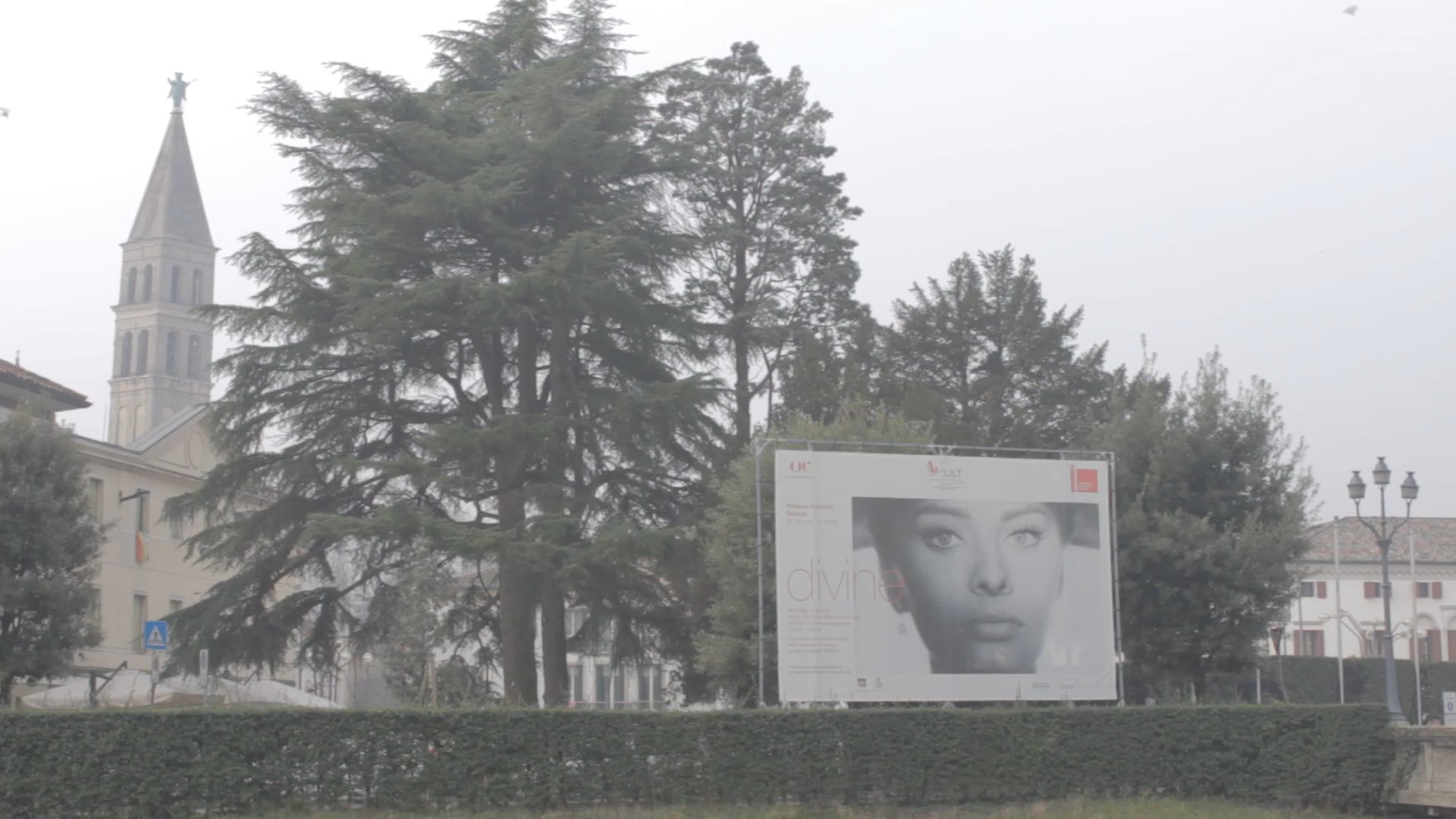
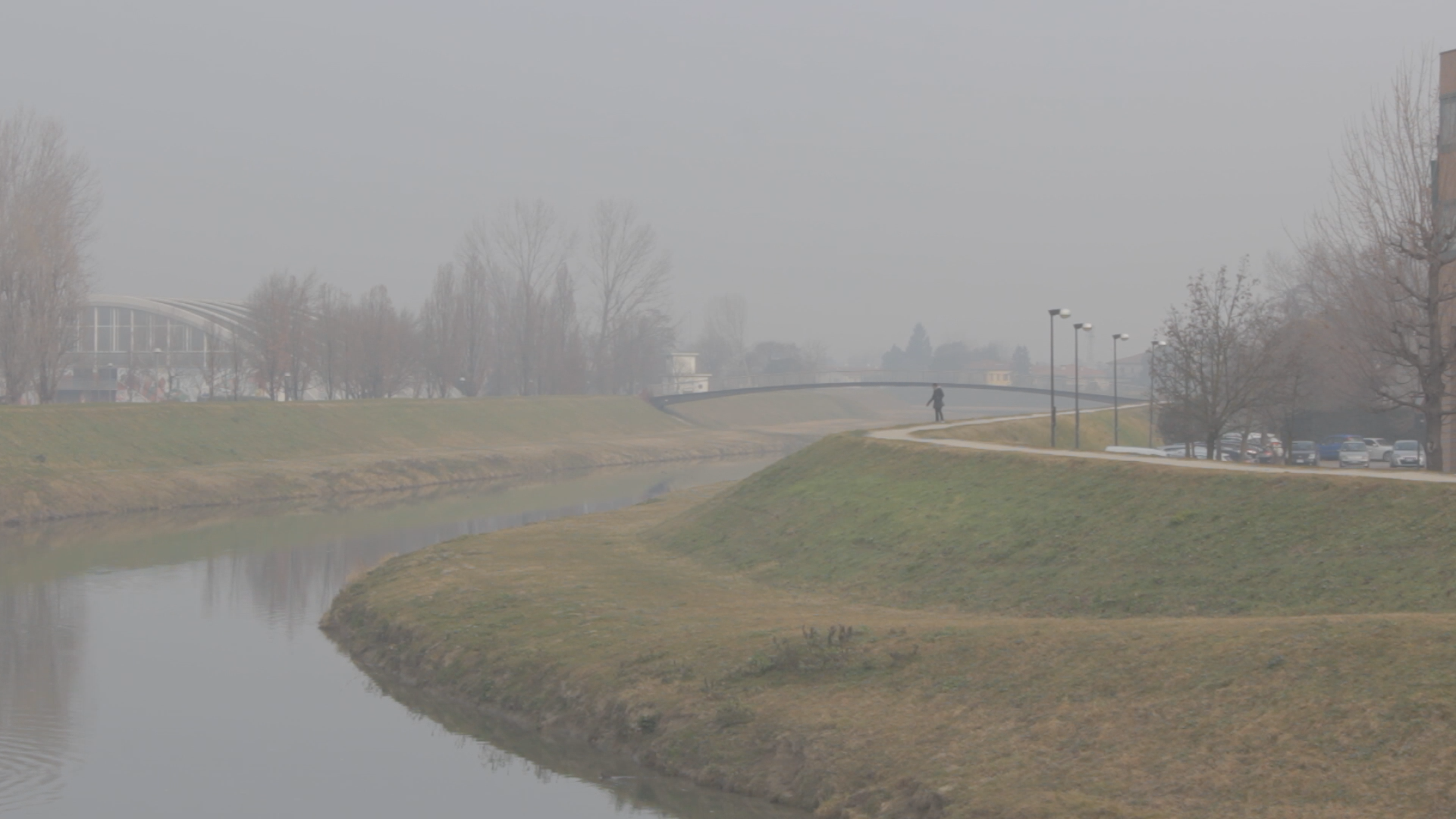
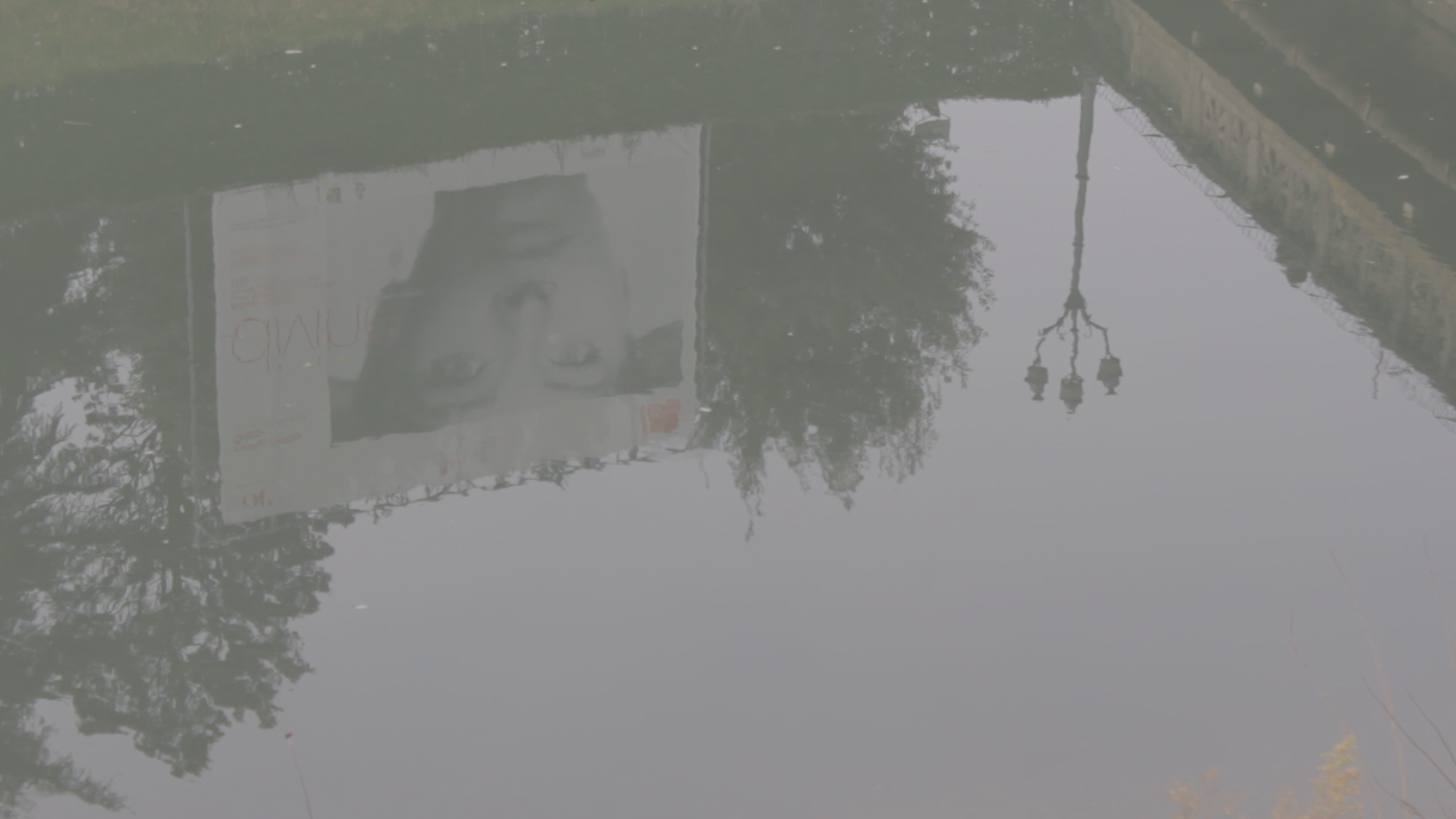
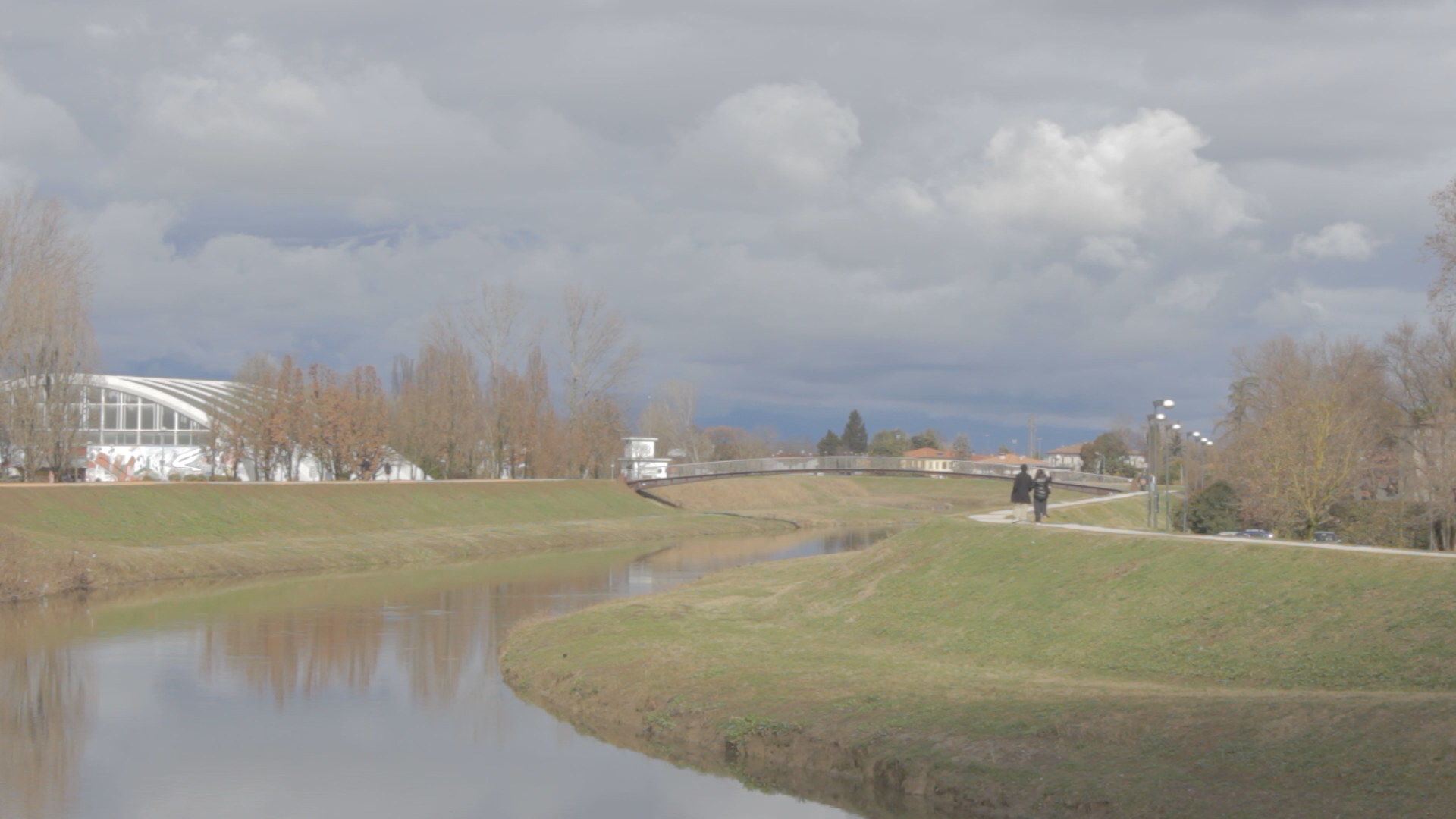
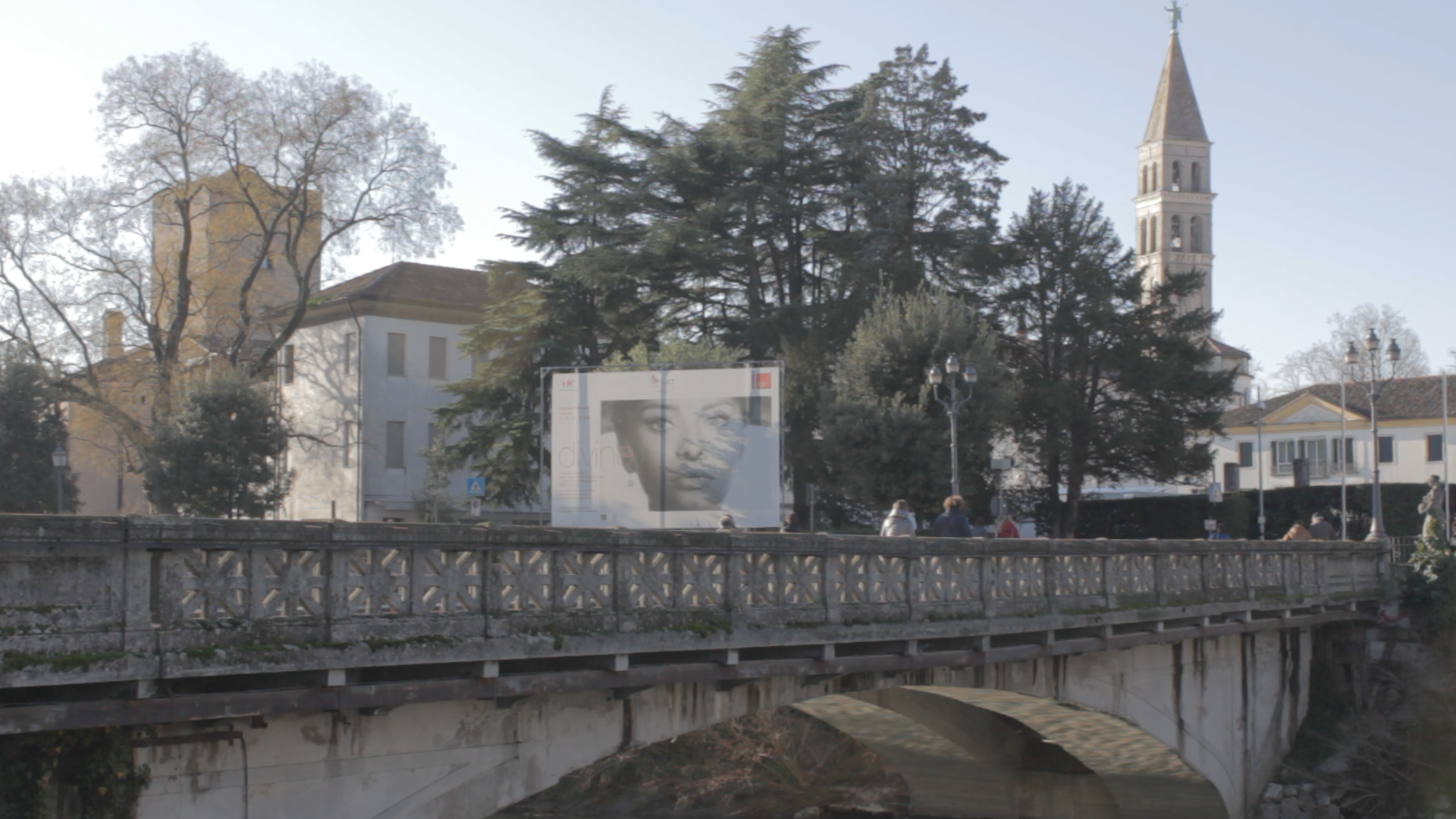
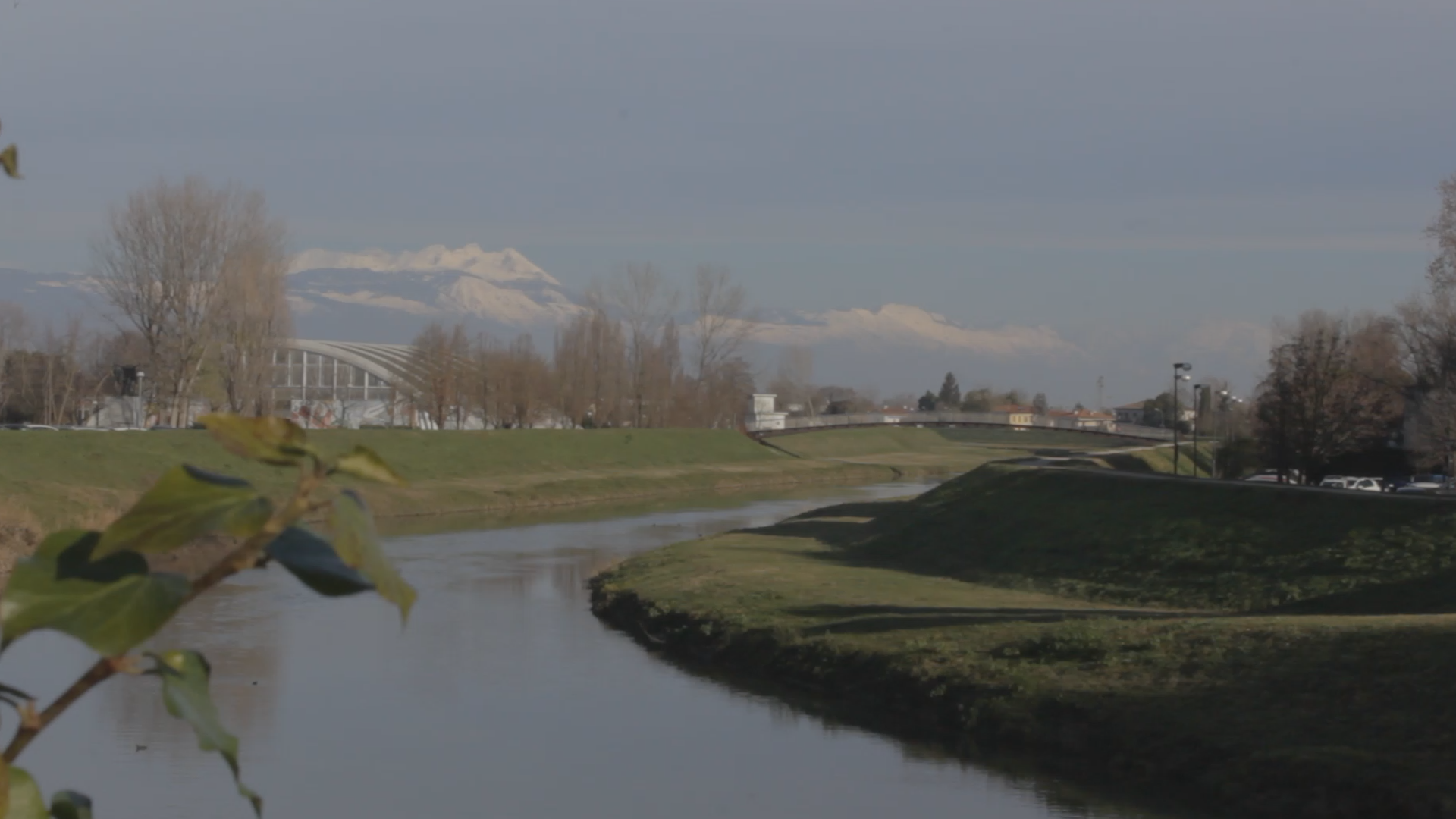
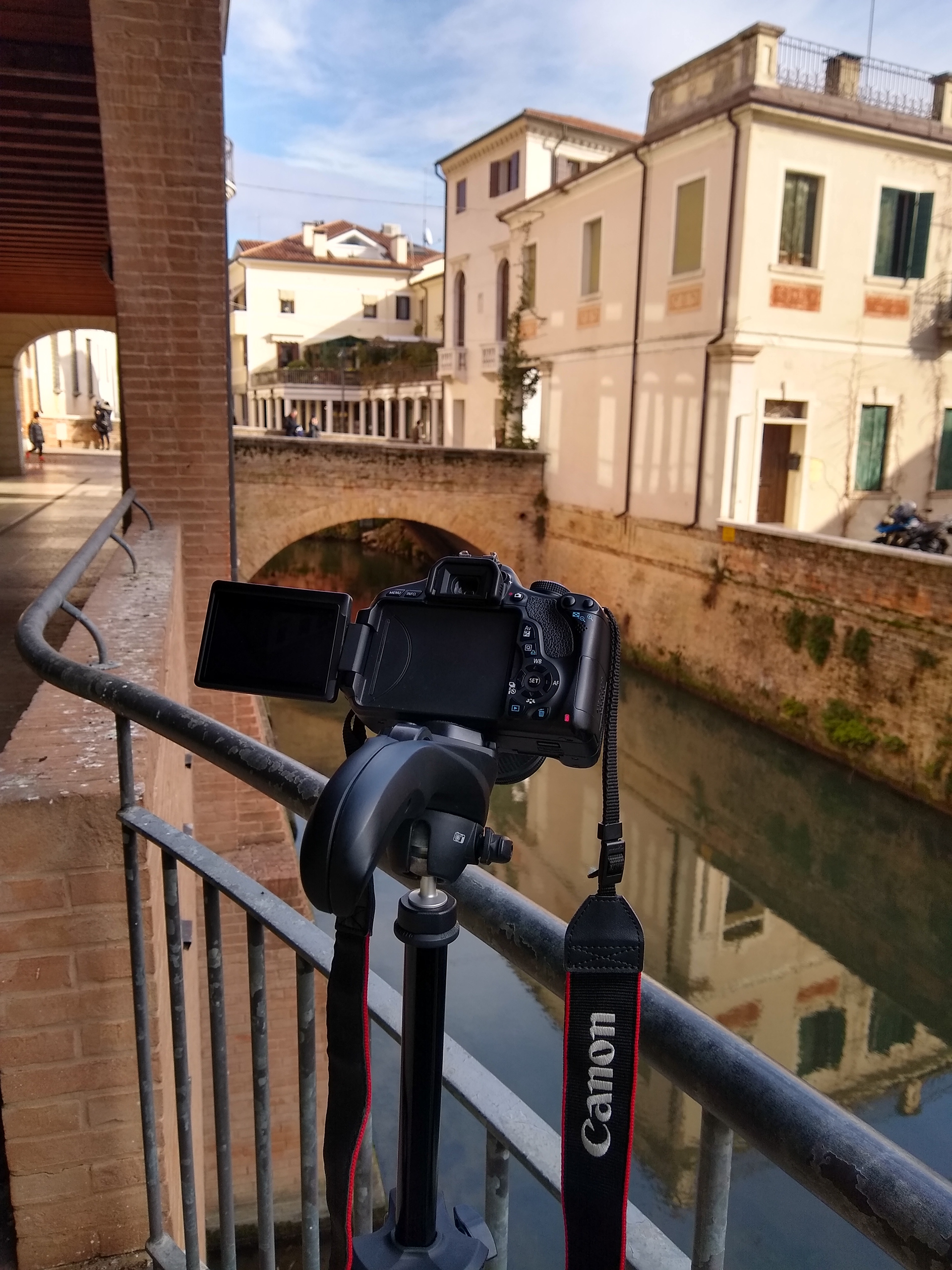
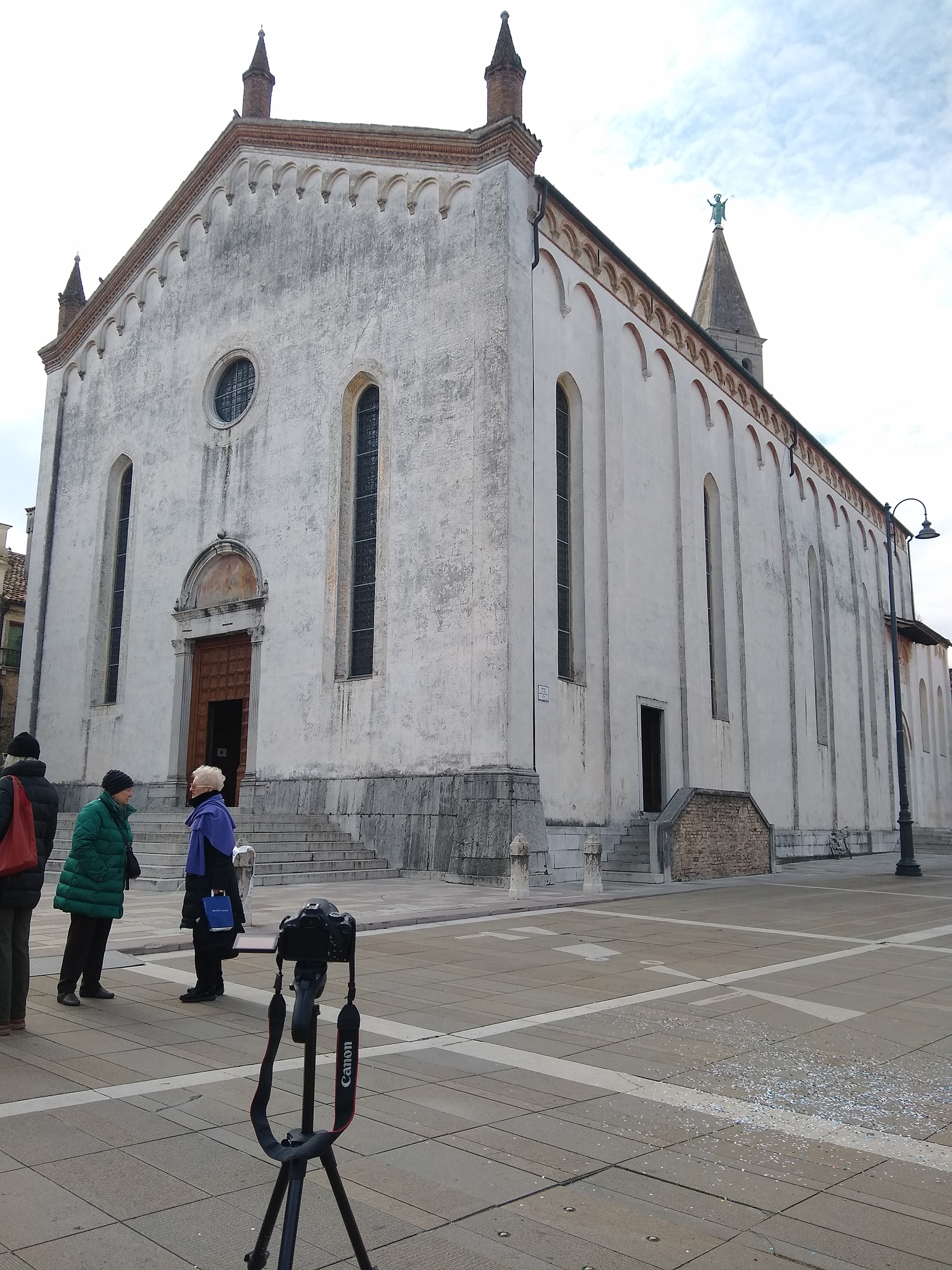
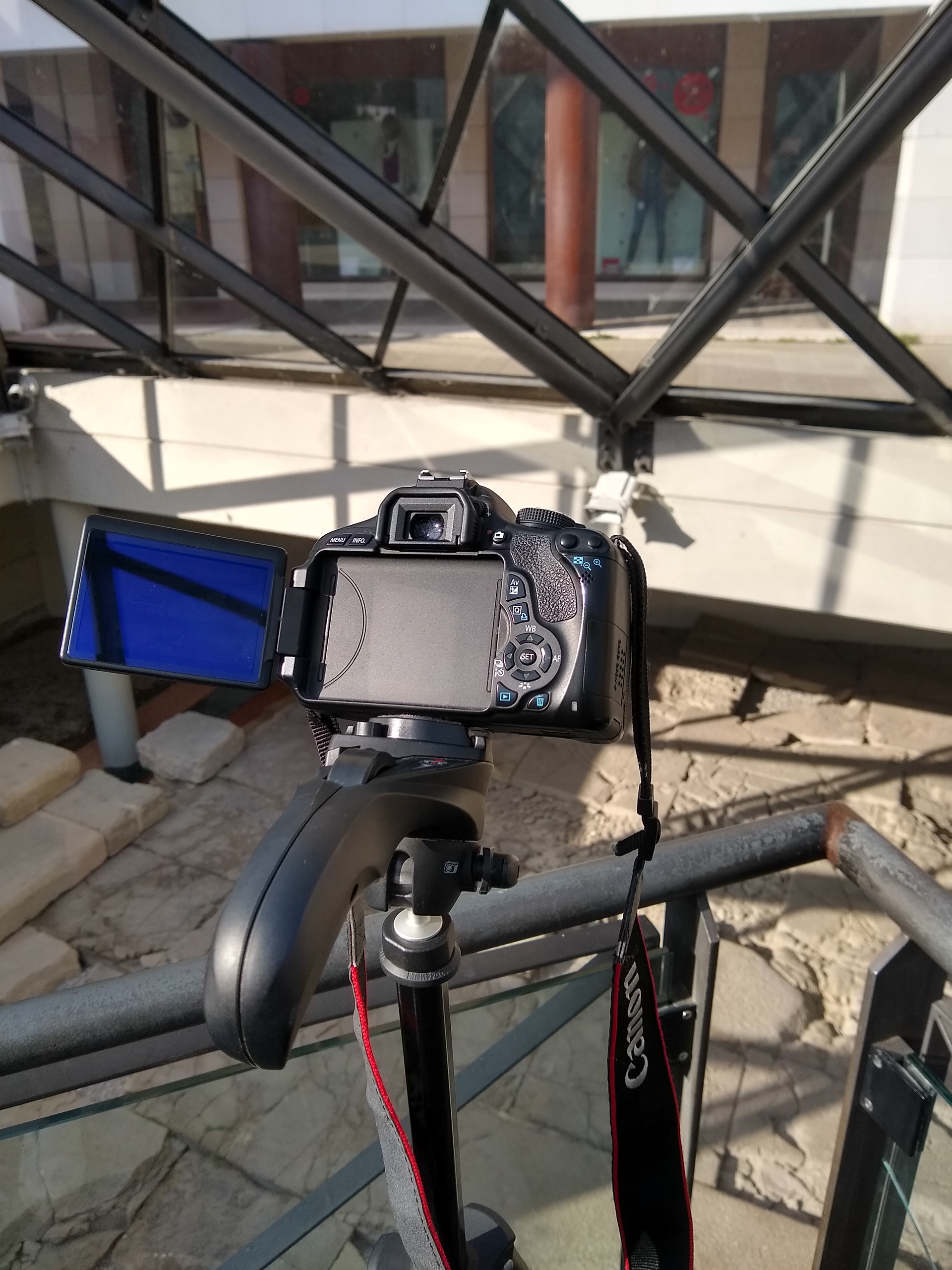
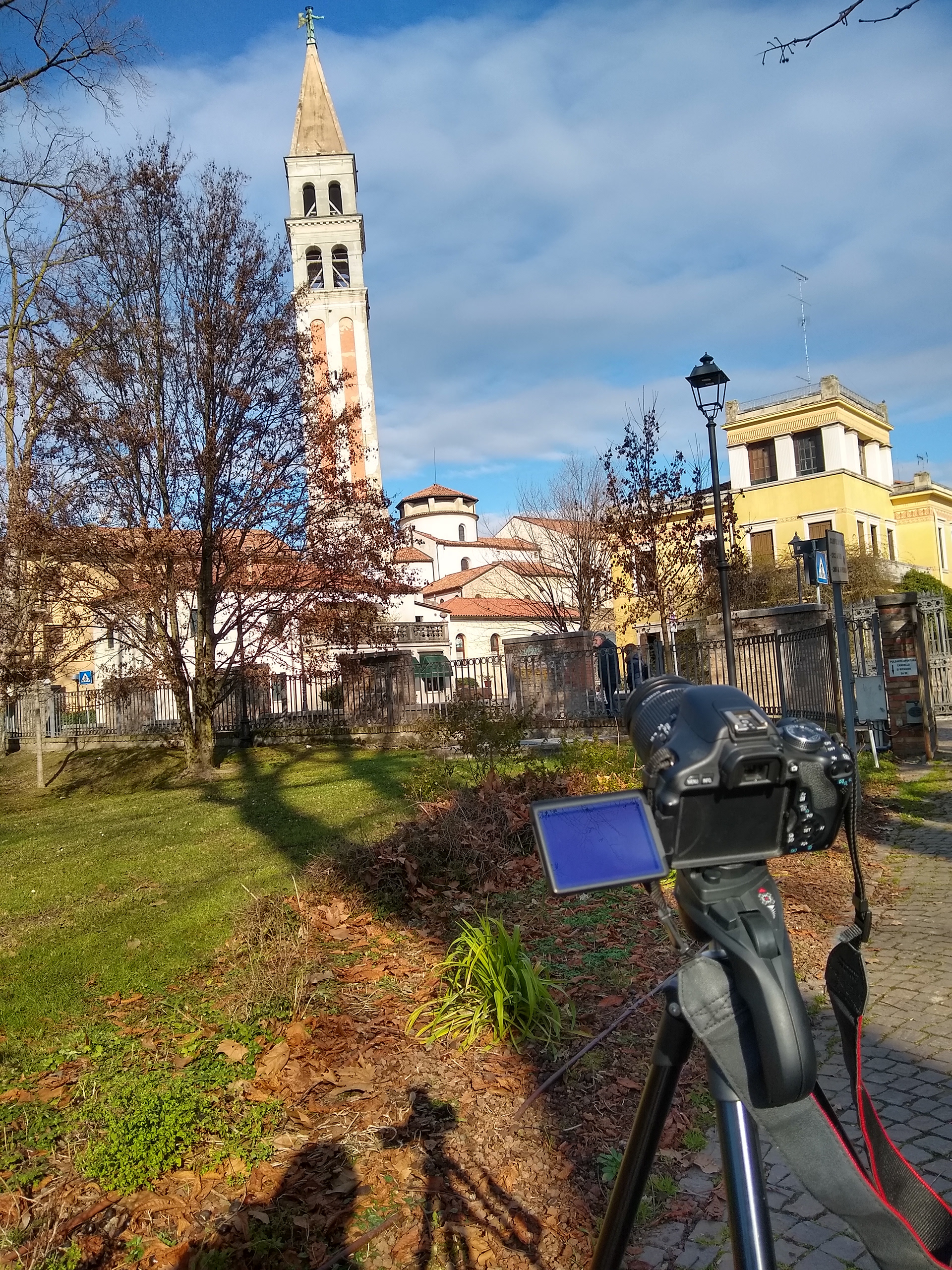
Treatment
The city of Oderzo is presented poetically, using metaphors related to nature. The film is structured around meteorology, tracing a narrative arc of transformation in accordance with the progression of the mission: from fog (unfamiliarity with the place), passing through clouds (perception of the city and its surroundings), light drizzle (understanding the history and aspirations of its inhabitants), sunbreak (introduction of the residents' social mindset), Christmas lights in the darkness (artificial facades that conceal aspects of the city), the vivid colors of sunset (the climax, representing people emigrating and immigrating through airplane contrails, following a path opposite to that of Oderzo’s residents), and finally, the full sun (the conclusion and discovery of the mission).
The themes emerge gradually through the discovery of Oderzo and address urban planning (the dependence on cars in a small city with narrow streets, the marginalization of those without a car, spaces not designed for pedestrians and bicycles, and the infrequent public transportation that limits its use), sexism (women being relegated to passive roles as housewives, mothers, or beauty icons), racism towards foreigners (immigrants from countries with weaker economies than Italy’s are not well received), the power of the Church (referencing the Duomo, the largest and oldest building in Oderzo), wars and invasions (which have shaped the territory and identity of modern-day Oderzo), governance and bureaucracy (structured to impose higher taxes, gradually marginalizing those who cannot afford them), the facade of the city with its illusion of perfection (urban decorations with plants, flowers, Christmas lights), and the common aspirations of the people of Oderzo, fragmented within the capitalist system of consumption. These themes are approached critically within a contemporary context but are presented to the viewer poetically and evocatively, without a direct or explicit stance. The idea is to introduce a critical element in every scene—after establishing the context and mission—like individual puzzle pieces that at first seem unconnected, only to converge in the final conclusion, where the critique is made explicit based on the evidence presented throughout the film.
In this sense, the main character is the city of Oderzo itself, evoked impersonally through its collective imagery. Oderzo is documented poetically through elements of nature (creating metaphors, such as associating the goose with the woman), its ruins, and its traces, with the goal of uncovering its true archaeology in a sociological sense: the habits and ideologies of its inhabitants. Additionally, the film highlights and confronts uncomfortable themes for today’s residents of Oderzo, such as the massacre of World War II (which is currently unspoken of and has no monuments in the city), the monuments to the fallen of World War I (while none exist for those of World War II), immigration (many oppose welcoming immigrants into Italy), conformity and silence in the face of state regulations (no one denounces injustices or questions the payment of new and unusual taxes, high utility bills from mandatory private service providers, or fines that are not imposed in other parts of Italy).
The second character, visually hidden, is the filmmaker, whose voice guides the narrative. The film is always narrated in the first person: the filmmaker speaks directly to the viewer through her own personal experience. Finally, the third character is the viewer themselves: the filmmaker always addresses a single interlocutor, creating a sense of involvement in the mission, which ultimately serves as a pretext to watch the film. The choice of this linguistic approach also seeks to create a sense of agreement in the viewer, encouraging them to engage with this uncomfortable perspective on Oderzo.
Motivation
I am an Argentine filmmaker, a foreigner, and I lived in Oderzo for more than a year. At first, I was struck by its tranquility, beauty, and peaceful connection with nature. After a while, I realized that it is a town frozen in time, not only due to the aesthetic aspect of its ruins and archaeology, but also because of the ideological and social mindset of its people. One has the feeling of living in a bubble, isolated from the rest of the world.
Since winter is very cold, gray, with fog and humidity, I experienced a few sunny days that gave me a special energy to face that period, a particular warmth. The goal of this film is, through a journey that goes from the storm to full sunlight, to highlight the critical points I observed in Oderzo and its inhabitants, encouraging the viewer to reflect on contemporary society: there are themes that seem to belong to outdated discussions of the past, but in reality, they persist today. Examples of these issues include the passive role and the aesthetic value attributed to women, the power exercised by the male figure, the assumption of a lifestyle that follows the course of the capitalist system without questioning it, the maintenance of the Church's power, the unquestionable authority of the State, negative prejudice against immigrants, and individualistic interests. Of course, this does not mean that all the people of Oderzo have these characteristics.
Since winter is very cold, gray, with fog and humidity, I experienced a few sunny days that gave me a special energy to face that period, a particular warmth. The goal of this film is, through a journey that goes from the storm to full sunlight, to highlight the critical points I observed in Oderzo and its inhabitants, encouraging the viewer to reflect on contemporary society: there are themes that seem to belong to outdated discussions of the past, but in reality, they persist today. Examples of these issues include the passive role and the aesthetic value attributed to women, the power exercised by the male figure, the assumption of a lifestyle that follows the course of the capitalist system without questioning it, the maintenance of the Church's power, the unquestionable authority of the State, negative prejudice against immigrants, and individualistic interests. Of course, this does not mean that all the people of Oderzo have these characteristics.
I want to reveal how the system in which we live is sustained through visible and invisible structures, from ancient times to today. The shape of the eight, the analemma, functions as a metaphor for a cycle that perpetuates itself in the same way throughout time. The origin of Opitergium is unveiled through its archaeology.
